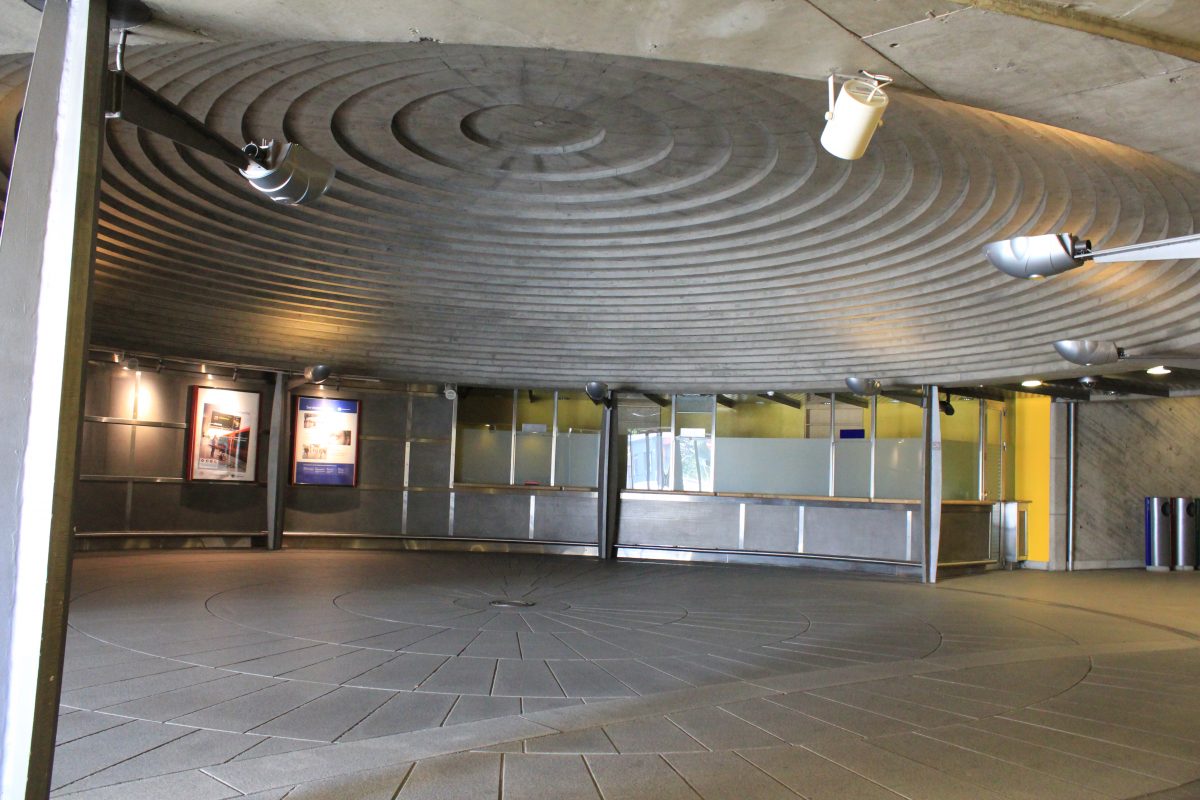This doesn’t appear in travel guides to Oslo, but every sound tourist should look it out if they’re in town. Here is me describing the strange acoustic, and as I walk into the middle of the ticket hall you can hear how my voice takes on a strange warbling. (The end of the audio when I walk out from the centre is the most dramatic).
Flutter echos are caused by repeated reflections arriving at regular intervals. In the graph below, you can see them as a set of clearly spaced spikes in the response to the room to a balloon burst. A warble is heard when the reflection pattern has some subtle irregularity about it. There also has to be a delay of more than about twenty-milliseconds for the brain to sense a temporal fluttering.

The architect Arne Eggen kindly sent me an article about the station that includes a plan for the ticket hall. The red lines are added by me to show that the inside space isn’t a simple cylinder but two half cylinders of different radii joined together. This means focussed reflections from the top half-cylinder arrive quicker than those from the bottom half-cylinder. But it is actually more complicated than that, because the domed roof also plays a role in breaking up the regular reflections.

The other thing I learnt from the architect was it wasn’t deliberate. And the railway company didn’t like the effect when it was first built. However, once musicians and others started visiting the remarkable acoustic as a tourist attraction, the train company grew to love it and put a plaque on the floor that says ‘Akustik Skulptur.’
Location
Map. Henrik Ibsens gate, 0010 Oslo, Norway

